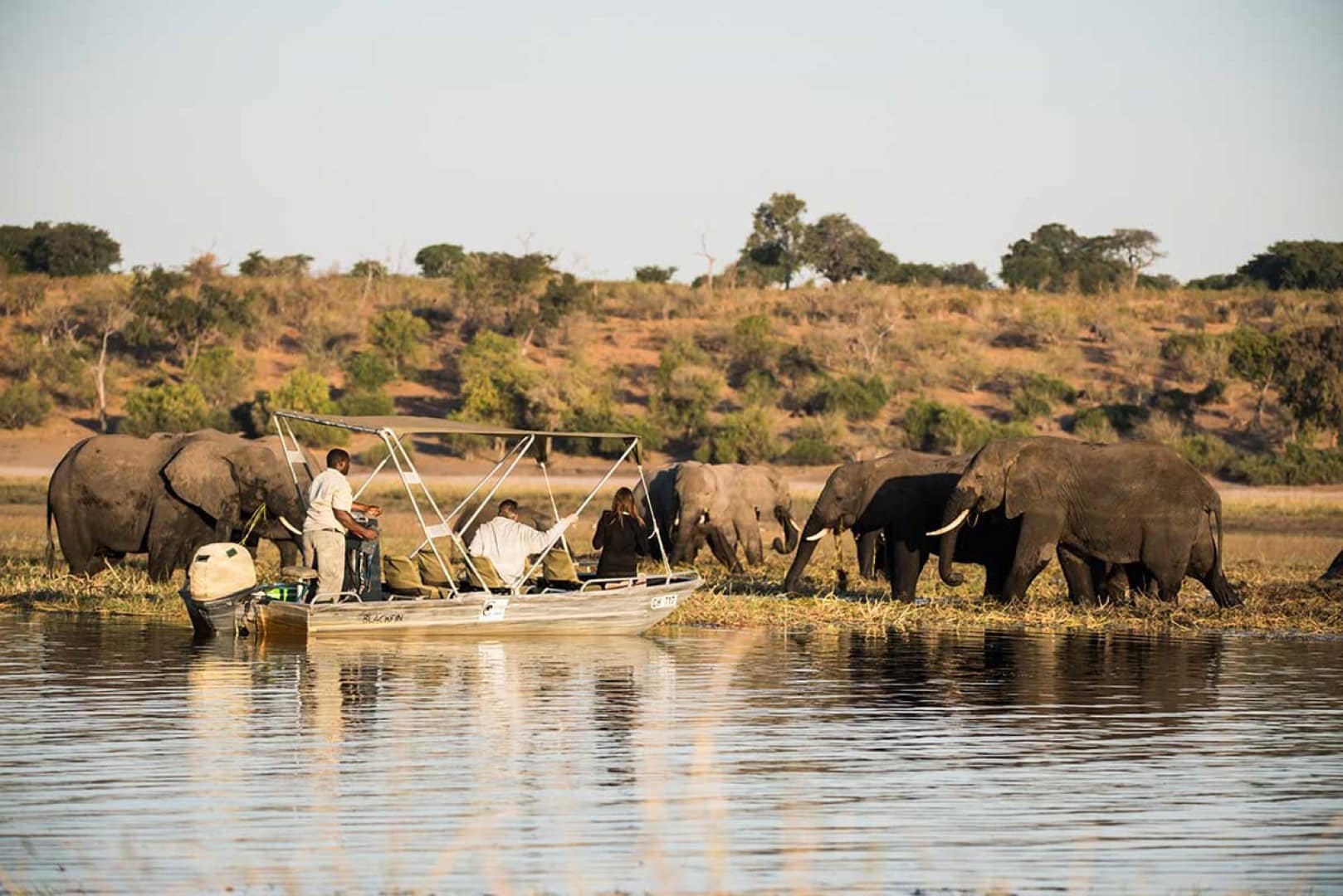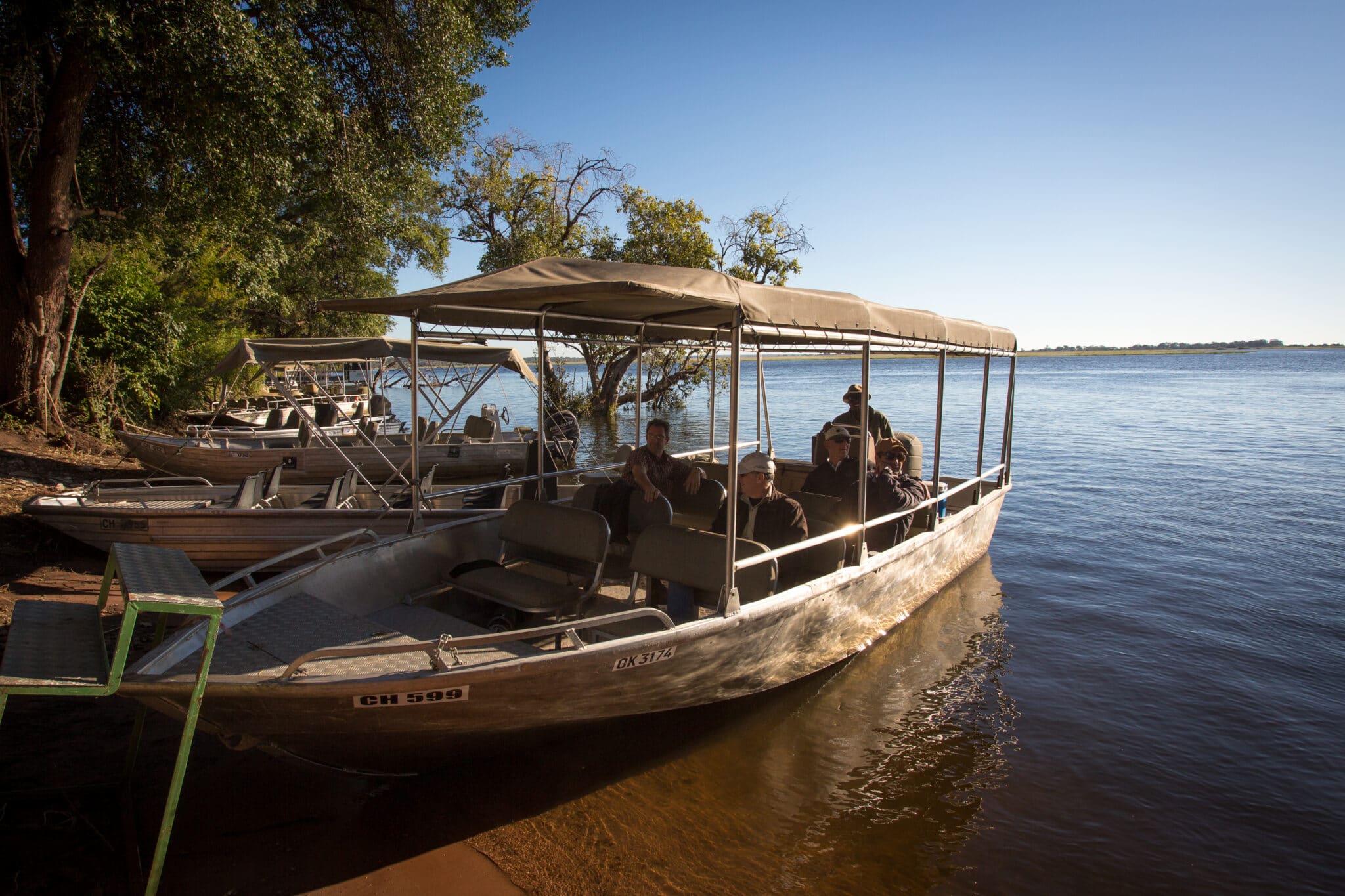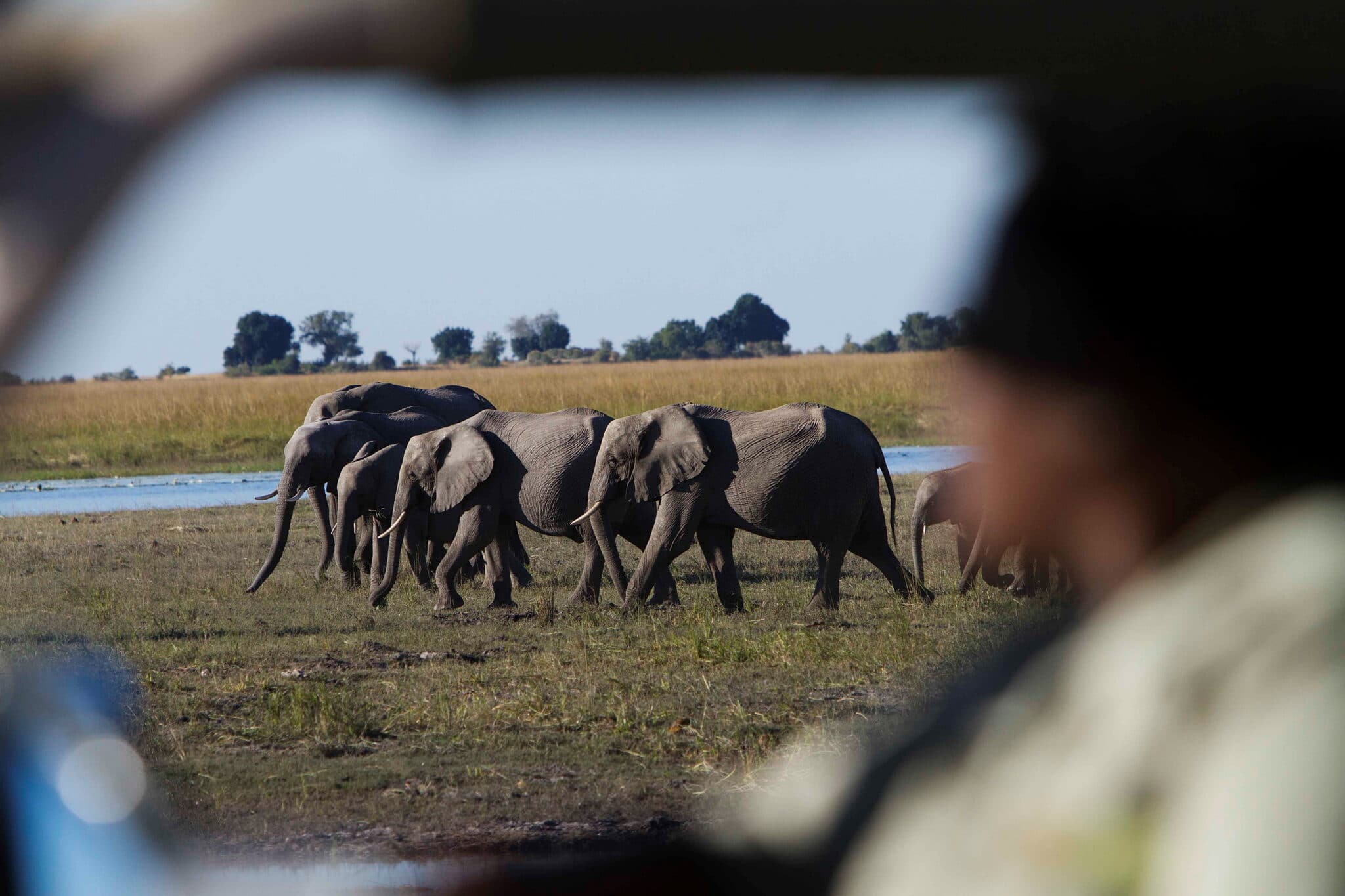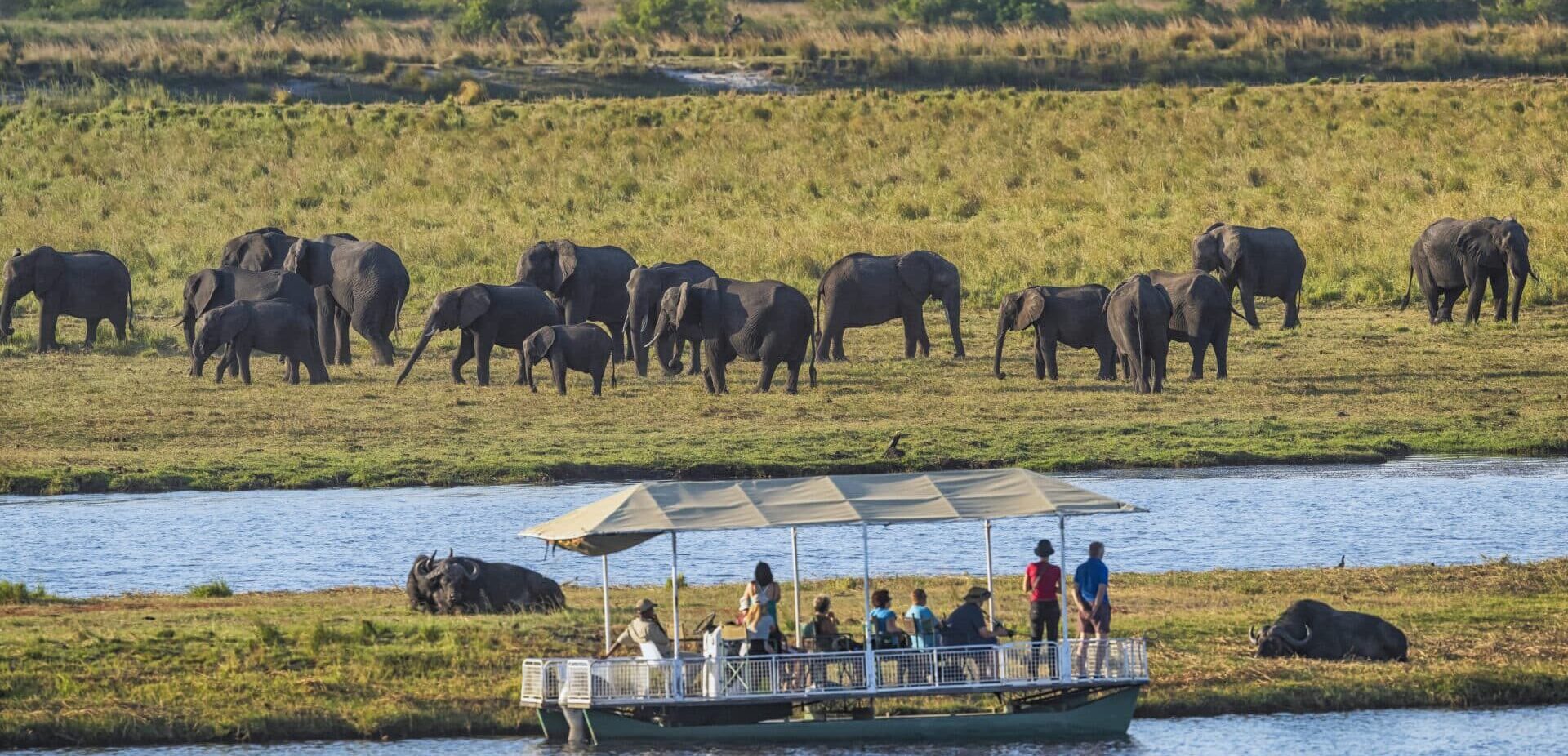Chobe National Park is Botswana’s most biologically diverse park, meaning that it’s a haven for wildlife. This makes it a must-visit destination in southern Africa for Botswana safari goers. From large herds of elephants seen roaming the wilderness to dramatic interactions between predators and their prey, a safari in Chobe National Park will leave you with memories to last a lifetime!
Top Destinations in Chobe National Park

This national park boasts two sensational wildlife areas that will blow safari-goers away:
Chobe Riverfront: A Haven for Elephants
The Chobe Riverfront forms the northern border of the national park; its lush plains and forests are home to large herds of elephants and buffaloes. Housing the largest population of elephants in the world (around 120,000), Chobe is the best place to see these giants in action.
They often congregate by the riverfront along with other animals, such as zebras and antelope species. The national park has a few rare species like roan, puku, tsessebe, eland, red lechwe, and Chobe bushbuck. With the abundance of prey, predators aren’t far behind. Lions, leopards, hyenas, and cheetahs can be found here, too.
Savute Marsh: Witness Predator-Prey Interactions
The Savute Marsh was once a flooded environment – skeletons of trees remain that were once drowned during a flood decades ago. This marsh is a grassland that plays host to unique predator-prey dynamics and diverse wildlife.
Zebras on their annual migration pass through the Savute region with prides of lions following closely behind. The populations of zebras and antelope species also attract leopards, cheetahs, and wild dogs. For birdwatching safaris, you can spot secretary birds, Kori bustards, fish eagles, Abdim’s storks, and more.
Chobe Linyanti System: Riverine Wilderness
This is a land of floodplains, riverine forests, and marshlands where the Chobe and Linyanti rivers flow. Safari-goers can enjoy a more exclusive experience in the Linyanti Concession.
The diverse ecosystems and stunning biodiversity found here attract an incredible range of wildlife like elephants and buffaloes. Rare red lechwe and sitatunga antelopes traverse the marshy banks, avoiding the attention of the crocodiles in the water. A rich variety of birdlife makes this area a real thrill for birdwatching safaris.
When’s the Best Time to Visit Chobe National Park?

Although Chobe National Park can be visited throughout the year, May to October is excellent for game viewing, especially around waterfronts. The weather during this time is dry, forcing animals to gather around the main rivers and waterholes. November to December sees herbivore migrations between the Chobe River and Savute Marsh. During the rainy season from November to March, the park bursts with life as baby animals make their appearance.
Animals Found in Chobe National Park

Four of the Big Five are found here, with just rhinos being absent. You can expect to see large herds of elephants and buffaloes as well as lion prides, with leopards being occasional sightings. Giraffes, zebras, and hippos are seen in abundance in Chobe, and while cheetahs are here, they’re rarer to spot.
How to Get to Chobe National Park
Travellers need to fly into Kasane International Airport in the Chobe region of Botswana. You can then fly into the Savute area from Kasane.





















